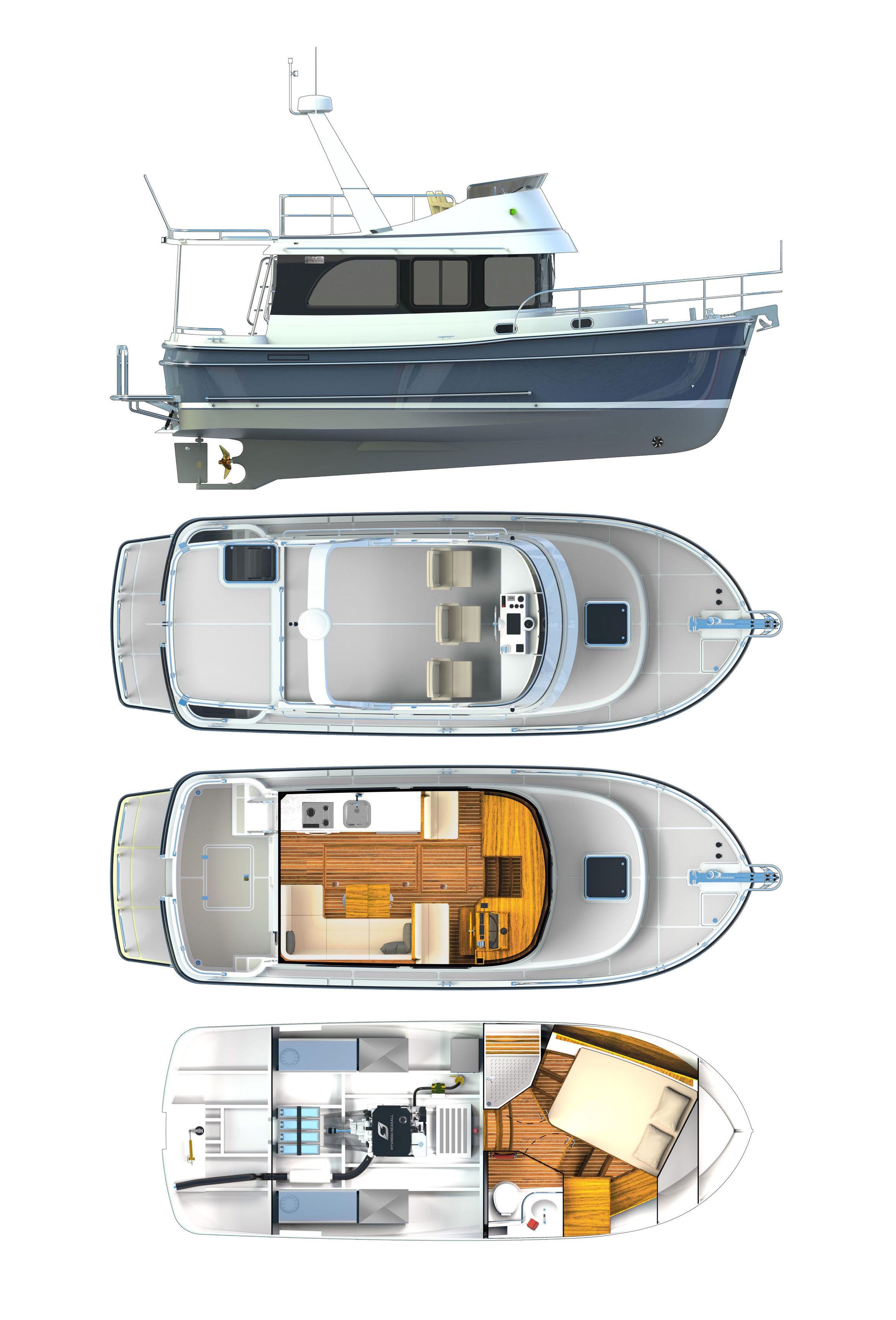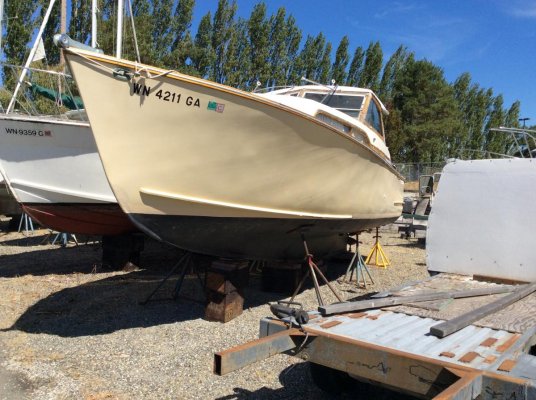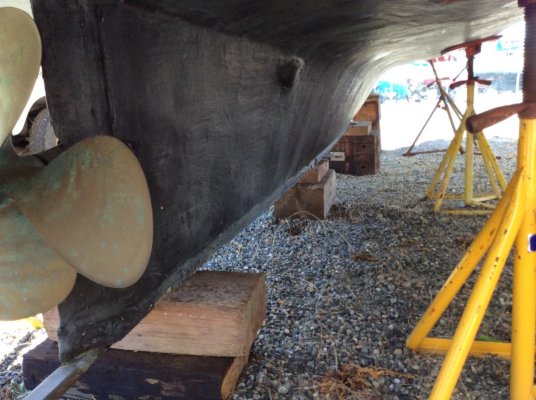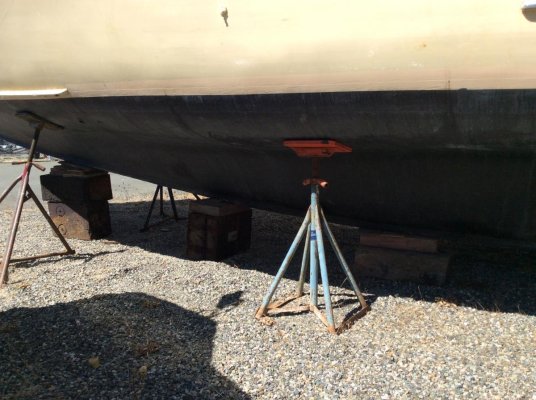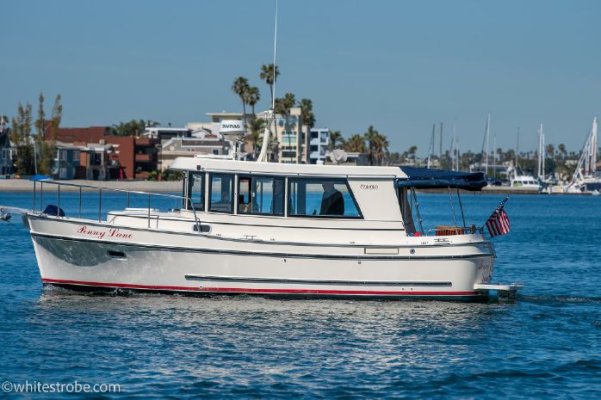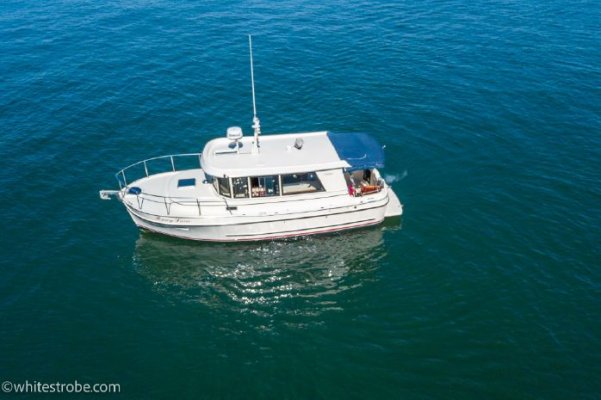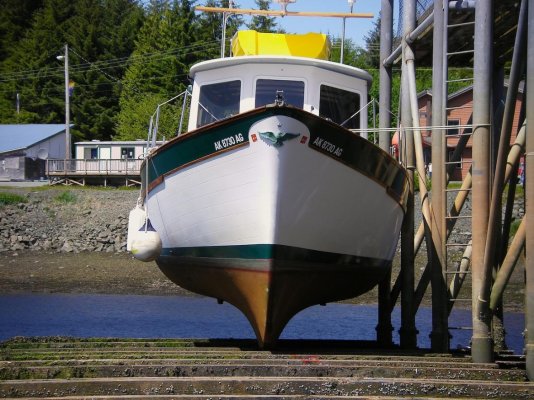Nomad Willy
Guru
Eric, what you say about the speeds is generally true, but not true of the Camano. Per Helmsman, who now builds them.
The hull-form is somewhat unique, called "keel form" hull. The design significantly reduces the bow wave one needs to climb over in the speeds just over hull speed. It produces a smooth fuel efficiency curve up to 15. But the hull form becomes unstable above 15. Hence, Helmsman will power them to approach but not exceed 15. Per Helmsman. And you can run them at the speeds you like up to 15 without paying the penalty of "the wall" effect normally between hull speed and planing speed.
There is an old Camano promo film on YouTube that discusses it.
The hull-form is somewhat unique, called "keel form" hull. The design significantly reduces the bow wave one needs to climb over in the speeds just over hull speed. It produces a smooth fuel efficiency curve up to 15. But the hull form becomes unstable above 15. Hence, Helmsman will power them to approach but not exceed 15. Per Helmsman. And you can run them at the speeds you like up to 15 without paying the penalty of "the wall" effect normally between hull speed and planing speed.
There is an old Camano promo film on YouTube that discusses it.

